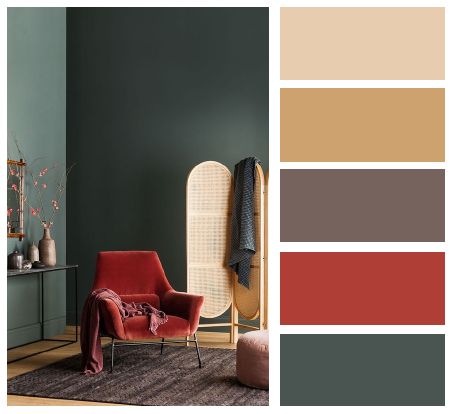Color, the silent language of design, holds immense power to transform a space. The right color combination can evoke emotions, create ambiance, and elevate the overall aesthetic of your interior. Understanding color theory and mastering color combinations is essential for achieving a harmonious and visually appealing design. In this comprehensive guide, we will delve into the world of color, exploring various color schemes, practical tips, and inspiring examples to help you create stunning interiors.
Understanding the Color Wheel
The color wheel is a fundamental tool for interior designers. It’s a circular arrangement of primary, secondary, and tertiary colors. Grasping the color wheel is crucial for selecting complementary color combinations that create visual interest and contrast.
By understanding the relationship between colors on the color wheel, you can experiment with different color schemes such as:
Analogous color schemes: These involve colors that are adjacent to each other on the color wheel, creating harmonious and soothing combinations. For example, blue, green, and yellow-green form an analogous color scheme.
Complementary color schemes: These pair colors that are opposite each other on the color wheel, resulting in high-contrast and vibrant combinations. For instance, red and green, or orange and blue, are complementary color pairs.
Triadic color schemes: This involves three colors equally spaced on the color wheel, offering balance and visual excitement. Examples include yellow, blue, and red.
Color Psychology: The Emotional Impact of Color
Colors evoke specific emotions and create different atmospheres. When selecting color combinations, consider the desired mood for each room.
Warm colors like red, orange, and yellow are associated with energy, enthusiasm, and warmth.
Cool colors such as blue, green, and purple are often linked to calmness, relaxation, and serenity.
Neutral colors like white, black, gray, and beige provide a timeless and versatile base for any color scheme.
For instance, a bedroom might benefit from a calming blue and green color combination, while a living room could be energized with a combination of orange and yellow accents.
Creating Harmonious Color Combinations
Achieving a harmonious color palette is essential for a visually pleasing interior. Here are some tips:
Start with a neutral base: Neutral colors like white, beige, or gray provide a foundation for incorporating bolder colors.
Use the 60-30-10 rule: This rule suggests using 60% of the dominant color, 30% of the secondary color, and 10% of the accent color for a balanced look.
Introduce accent colors: Bold accent colors can add personality and visual interest to a space.
Consider the room’s function: The color combination should complement the room’s purpose. For example, a kitchen might benefit from vibrant and stimulating colors, while a bedroom would be more suited to calming tones.
Experiment with different shades and tints: Varying the shades and tints of a color can create depth and dimension.
Color Combinations for Different Rooms
The choice of color combinations depends on the room’s function, size, and desired atmosphere.
Living room: Create a welcoming and inviting space with a combination of neutral colors, accented with warm or cool tones depending on the desired mood.
Bedroom: Opt for calming and relaxing color combinations like blues, greens, or soft neutrals to promote sleep and relaxation.
Kitchen: Use vibrant and stimulating colors to create an energetic and inspiring atmosphere.
Bathroom: Create a spa-like retreat with calming and serene color combinations like blues, greens, or whites.
Color Combination Inspiration
To spark your creativity, explore various color combinations and gather inspiration from different sources.
Nature: Look to nature for harmonious color palettes. Consider the colors of the sky, ocean, forests, or flowers.
Art and fashion: Analyze color combinations in paintings, sculptures, and fashion to discover new possibilities.
Interior design magazines and websites: Explore professional interior design projects for color inspiration.
Color combination tools: Utilize online tools and apps that generate color palettes based on your preferences.
By understanding color theory, considering color psychology, and following practical tips, you can create stunning and harmonious interiors that reflect your personal style
Keywords: color scheme, interior design tips, color psychology, color wheel, color trends, paint colors, home decor, color inspiration, bedroom colors, living room colors, kitchen colors, bathroom colors,
accent colors, neutral colors, bold colors, harmonious colors, contrasting colors, color palettes, color combinations for small spaces, color combinations for large spaces.

